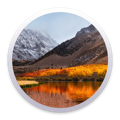I did the EtreCheck (below) and would appreciate any help as to get my iMac back to normal/fast mode...
com.macpaw.CleanMyMac3.Scheduler.plist (MacPaw Inc. - installed 2018-05-18)
And BrickMyMac claims another victim.
Given that Etrecheck completed fairly fast (Performance: Good), the beach balling may indicate a failing hard drive. Most drives fail without any indication. Make sure you are backed up.
Back up your Mac, Boot into Internet Recovery, Erase the drive completely, and reinstall the OS. It's not worth anyone's time to try and track down what was damaged/removed/cleaned by the system mods you have installed.
You have also installed Western Digital's hard drive software. Completely useless and possibly harmful.
If you need to use those drives with Windows (not in BootCamp), then buy the commercial version of Paragon or Tuxera or just use ExFAT where you don't need third-party kernel extensions.
After reinstalling, during the Startup Assistant, Migrate only your user data.
Only reinstall the system modifications that are absolutely necessary--that's pretty much none, but you decide for yourself.
After erasing the Fusion Drive, it may detect that it is no longer Fused. If it asks, Let it rebuild the Fusion drive.
If it doesn't, you can rebuild it manually using these instructions: How to fix a split Fusion Drive - Apple Support
